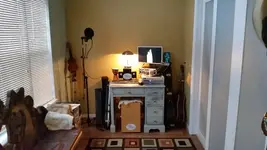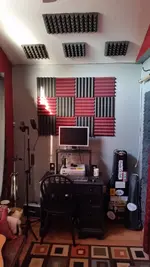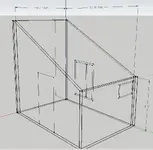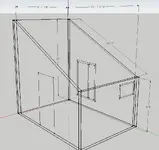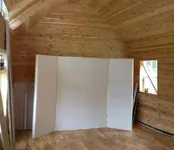bLUiVORY,
I replied as I did above because too many folks see random details on the internet about what kind of built-in trapping frame construction offers. My friend Andre Vare calls it 'Invisible Alpha' trapping.
It DOES offer trapping, but the trapping offered depends heavily on a great number of factors. A few of those factors mass, insulation depth, type of insulation, distance to the next rigid partition, the bending modulus of the partition, etc. It is not an easy answer and varies greatly from build to build. So, Don't count on it. ok?
You should hire an acoustic engineer to determine the frequency of resonance that your 6 partitions offer. That information can help you when you design/determine the amount and depth of trapping needed.
I had mentioned earlier in this thread, I think, that most enclosures will have a limit on the lowest usable frequency. This is the point where wave response crosses into what is called the pressure zone. IOW, the room dimensions are too short to support half a full wavelength.
Example: a room with the longest dimension of 14 feet (4267 mm) will have an axial mode at 40.4 Hz. This is the LOWEST frequency accurately reproduced in that room. NOW, it IS possible to produce sound from a loudspeaker that is lower in frequency than the pressure zone boundary.. BUT, one must take care not to overload amplifiers or woofer cones in the process. Sometimes, especially in ported loudspeakers, the possibility of woofer coil burn-out is high during attempts to drive the pressure zone.
That said; Frequencies are perceived and record-able, but producing them with certain equipment becomes problematic. In-Ear headphones work in the pressure zone of our ear canals and are designed to drive the ear canal.
Ported sub-woofer systems are not designed to drive a pressure zone.

The treatment for any room should be designed FOR the system of the room/building. This is the reason why one thing works well in one room, but requires a much different solution in another. You need to know the crossover frequency of your walls and ceilings.
Cheers,
John
